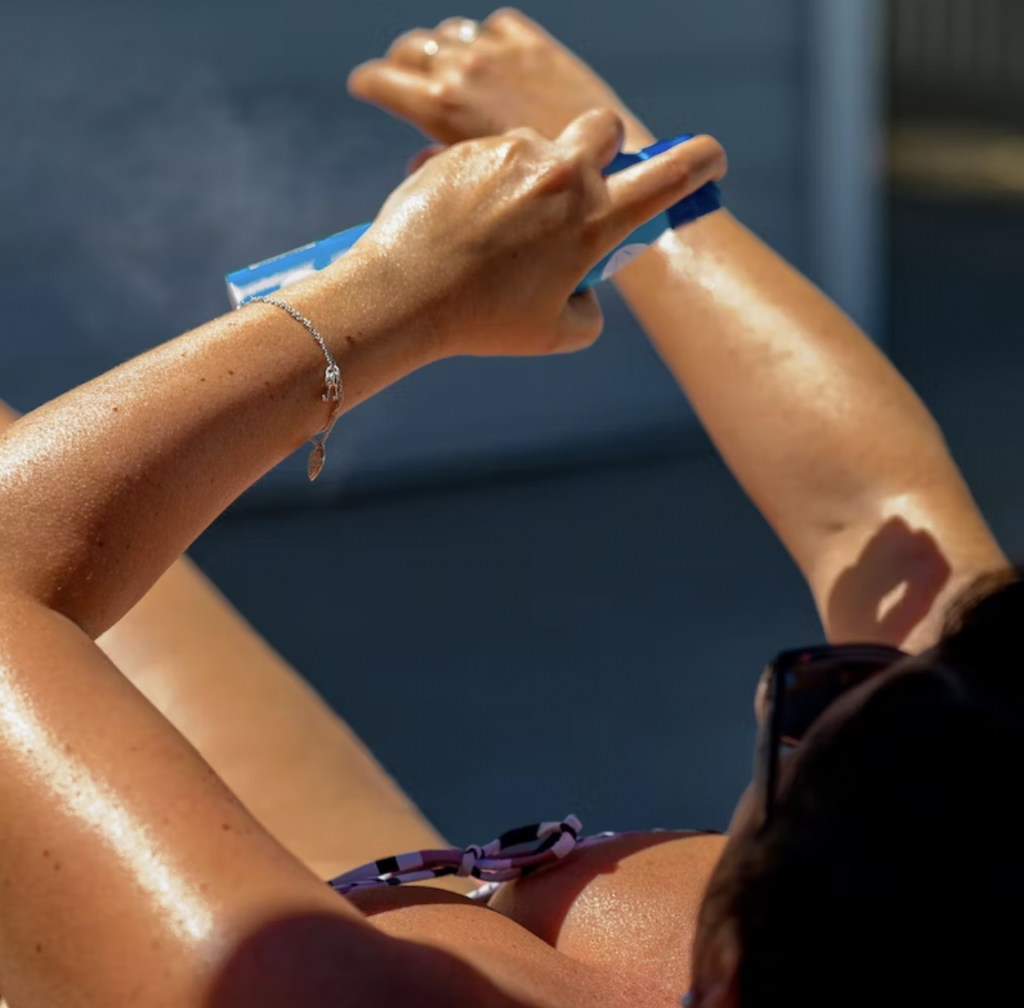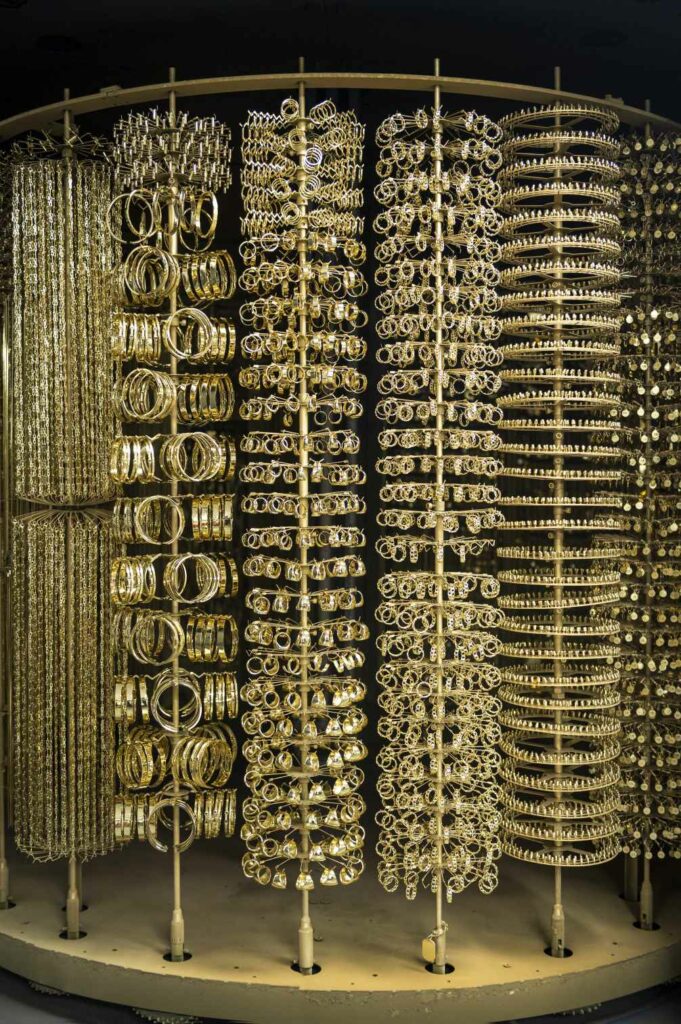Jewelry enhances beauty and appearance. Unfortunately, most jewelry is vulnerable to water, which compromises its luster and shine, and as a result, impacts its value and usability.
Amidst all these, some jewelry is waterproof and can be worn during activities like swimming, workout, or showering, without any reaction. Knowing them will help you make the right jewelry purchase, which will ultimately last longer and maintain its value.

In this post, we will elaborate on all you need to know about waterproof jewelry, including the common materials used in its making, techniques to achieve waterproof tarnish-free jewelry, how to care for it, and the inspection processes. But before that, let’s highlight a few benefits of waterproof jewelry.
Benefits of Waterproof Jewelry
- Durability and Longevity: Waterproof jewelry is specially made to last and survive contact with moisture. Its resilience against water damage ensures that your jewelry stays in pristine condition for a long time.
- Perfect for Various Occasions: Its capability to withstand water offers added advantages like versatility. You can wear waterproof jewelry for sports and outdoor activities, as well as daily wear. It’s a practical choice for everyday wear.
- Low Maintenance and Care: Traditional jewelry often requires dedicated care for the maintenance of its appearance. However, waterproof jewelry requires less care and maintenance. This makes it a great option for everyone to worry less about cleaning it after accidentally getting exposed to water.
Common Waterproof Jewelry Materials
Jewelry can be made of several materials. Let’s review these common materials used in crafting waterproof jewelry:
Stainless Steel
This material comprises iron, chromium, and some other metals. It is long-lasting, resistant to rust, and easy to clean, which makes it perfect for individuals who lead an active lifestyle or frequently engage in water-related activities. Whether you are swimming, diving, or caught outside in the rain, it won’t tarnish or lose its shine. Also, stainless steel is popularly used in making jewelry because of its mirror-like finish. Also, it is budget-friendly, making it a common option for people in need of waterproof jewelry.

Titanium
This is the strongest, purest, and lightest metal currently. It is skin friendly and durable, with some stainless steel properties. In conjunction to that, it does not tarnish or rust over time, which is why it’s often used when making waterproof jewelry. Also, it is highly corrosion-resistant and unaffected by all types of water, including saltwater. In fact, its inert benefits cut across the medical industry, as it is used in the manufacturing of solid implants. Hence, why titanium jewelry is often more costly than other materials.

Solid Gold
For centuries, gold has been popularly known for its hardness, quality, and flashiness. It is also a sign of status symbol, making it a priority for people who seek to announce their presence in special events. Solid gold, in its purest state, is waterproof and doesn’t get oxidized. However, some gold is often plated with a thin layer of rhodium to give more shine and change the color. With time, these types of gold jewelry tend to lose their luster and brilliance.

Sterling Silver
Also called 925 silver because it is a composition of 92.5% pure silver and 7.5% of alloyed metals like brass and copper. In contrast to pure silver, sterling silver contains traces of metals that make it hard and capable of withstanding tough temperature and humidity. Even when you wear it in the shower or while working out, it doesn’t lose its mesmerizing sparkle. However, you need to comply with some simple cleaning routine specified by the manufacturer to curb any prevailing harsh effect.

Gold Filled
Gold filled jewelry involves bonding a layer of gold to a base metal, usually brass or copper. Unlike gold-plated jewelry, the layer is thicker, resulting in a more durable and waterproof piece. Like solid gold, gold filled retains its beauty and shine, even when submerged in water. It is an ideal option for people who want the elegance and waterproof ability of real gold without breaking the bank.

Precious Metals with Waterproof Coatings
Other options include precious metals like platinum, silicone, and palladium that are coated with special waterproof chemicals. They have an extra layer of protection against water, ensuring that the jewelry remains pristine even in wet conditions. This combination of precious metals and waterproof coatings result in exquisite, durable pieces that are perfect for various occasions, including casual outings and formal gatherings.

Does Waterproof Mean Sweatproof?
No, waterproof doesn’t mean sweatproof. Sweat is an acid that can tarnish metals. Sweating is a mechanism utilized by the body to rid itself of excess fats, fatty acids, and amino acids that can damage metals. Thus, sweatproof means that the jewelry is designed to withstand the moisture produced by the human body during physical activities like workout.
Waterproof, on the other hand, means that the jewelry is impervious to water i.e., it won’t allow water to pass through.
Common Sweatproof Jewelry Materials

Here are some common sweatproof jewelry materials:
Stainless Steel
This material is not only waterproof but also sweatproof. It is highly resistant to corrosion and doesn’t react to sweat. Stainless steel is commonly used for sweatproof jewelry like necklaces, rings, and bracelets.
Silicone
This is a flexible and waterproof material that isn’t affected by sweat. Silicone rings and bracelets are frequently worn by athletes and people who lead an active lifestyle.
Tungsten
This material is commonly known for its durability and resistance to sweat. It does not tarnish, corrode, or react with sweat, making it a fantastic choice for rings and bracelets used by individuals who do strenuous activities.
Rubber
Nowadays, jewelries are made with rubber, and this is because they are flexible and sweatproof. Rubber is commonly used for making sports and casual jewelry, which provide comfort and resilience during physical activities.
Plastic and Acrylic
These materials are sweat-resistant and lightweight. They are often used in colorful and fun jewelry designs, including earrings, bracelets, and necklaces that are suitable for sports and casual wear.
Is Rhodium-Plated Jewelry Sweatproof & Waterproof?
Rhodium is a rare and precious metal that is appreciated for its brilliant, reflective finish. Rhodium plating is the process of enhancing the beauty and durability of certain metals, often silver and white gold. The process involves applying a thin layer of rhodium on the surface of the base metal to give it a shiny, white, and reflective look. This not only enhances the jewelry’s aesthetics but also provides some protection against tarnish and wear.
- Sweatproof: Rhodium-plated jewelry is sweatproof, meaning that it can be worn during activities involving perspiration.
- Waterproof: On the other hand, rhodium-plated jewelry is not considered waterproof. While it can resist light splashes of water, it’s not designed for prolonged immersion or harsh water conditions.
Is Gold Vermeil Jewelry Sweatproof & Waterproof?
Gold vermeil jewelry involves an electroplating process, where a thick layer of gold is plated over a sterling silver base. For any jewelry to be recognized as gold vermeil, the thick layer of gold must be 2.5 microns. The result of the electroplating process is a piece of jewelry with the beauty of solid gold and strength of sterling silver.
- Sweatproof: Gold vermeil jewelry is typically sweat-resistant. The thick layer of gold provides good protection against sweat, so your jewelry won’t tarnish or corrode due to perspiration.
- Waterproof: Gold vermeil jewelry is considered waterproof too, but not to a very high extent. Therefore, it must not be submerged in water for a long time. However, it is suitable for everyday wear and occasional water contact.
Work-Out Friendly Jewelry Material Types

Workout jewelry is specifically designed to meet the unique demands of an active lifestyle. The materials used in the making must balance comfort, durability, and resistance to the challenges posed by physical activities.
- Comfort: Convenience and freedom is important during workouts. The jewelry materials should be lightweight, flexible, and should not cause irritation or discomfort.
- Durability: Workout jewelry should be able to withstand physical impact, stress, and possible contact with gym equipment or surfaces. Durable materials have the inert strength to endure these conditions without getting damaged.
- Sweat Resistance: During intense activities like exercises and workouts, the body produces sweat, leaving the jewelry to be directly exposed to moisture. Having jewelry made with sweatproof materials prevent tarnishing, corrosion, or discomfort that could occur.
- Resistance to Wear and Tear: Your jewelry should be able to maintain its appearance and quality despite everyday use, exposure to water, and occasional contact with cleaning agents, body lotions, or perfumes.
Considering these factors, the common materials suitable for making workout jewelry include stainless steel, titanium, silicone, tungsten, nylon cord, rubber, plastic & acrylic, leather, elastic bands, and Velcro straps.
How to Care for Jewelry to avoid Tarnish
Caring and maintaining jewelry to prevent tarnishing is essential for keeping the pieces looking their best. Usually, tarnish occurs when the surface of metals, especially silver and some gold alloys react with substances in the environment, like oxygen and sulfur.
Below is an elaborate step-by-step process on how to avoid tarnish on your jewelry:
- Keep it Clean
- Regular cleaning is crucial. Using a mild, non-abrasive cleaner or a mixture of mild dish soap and warm water, gently rub over your jewelry.
- Scrub with a soft-bristle toothbrush to remove dirt, oils, and contaminants that could influence tarnish.
- Thoroughly rinse your jewelry using clean, warm water.
- Dry Thoroughly
- Make sure your jewelry is completely dry before storing it. This is because residue can accelerate tarnishing.
- Using a soft, absorbent cloth, gently pat your jewelry dry. Pay keen attention to areas where water might be trapped.
- Store Properly
- Keep your jewelry in a cool, dry place, away from direct sunlight.
- Make use of anti-tarnish storage options, like anti-tarnish bags, cloth pouches, or jewelry boxes lined with anti-tarnish fabric.
- Store each piece separately to avoid scratching and tangling.
- Limit Exposure
- Reduce exposing your jewelry to harsh chemicals, such as household cleaning agents, hairsprays, body lotions, and perfumes. They contribute to tarnishing.
- Take off your jewelry before swimming, showering, or involving in activities that expose you to moisture, chlorine, or saltwater.
- Rotate Your Jewelry Pieces
- You reduce the likelihood of your pieces getting tarnished by wearing them regularly. The oils from your skin can help create a barrier against tarnishing agents.
- Rotate your jewelry collection, ensuring that each piece gets regular use.
- Give your favorite pieces a break. Don’t wear them too often, leaving others.
- Protectant Spray
- Give your jewelry a protective shield to combat the elements that cause tarnishing. In addition to prolonging the lifespan and attractiveness of your pieces, it can protect you from allergies like irritation, rashes, and hives.
- Polishing
- Using specialized polishing agents and cloth, periodically polish your jewelry. It helps remove minor tarnish and restore its shine and luster.
- Professional Maintenance
- For valuable or intricate pieces, consult a professional jeweler for deep cleaning and maintenance.
Techniques to Achieve Waterproof Tarnish-Free jewelry
To achieve waterproof tarnish-free jewelry, 3 major techniques can be used. They are:
E-Coating
Also known as electro-coating, it’s an immersion process that involves dipping the jewelry in an electrically charged bath containing a special coating solution. An electrical current is applied to the solution, making it adhere tightly to the jewelry’s surface. This results in a thin, protective layer on your jewelry.

Advantages
- Tarnish Resistant: Provides excellent protection against tarnishing, ensuring the luster and shine of your jewelry is intact.
- Waterproof: The coating serves as a barrier against water, making the jewelry capable of withstanding moisture and corrosion.
- Uniform Coverage: This process ensures that every part of the piece, including the inner areas are properly coated. It guarantees a uniform and consistent coating across the entire surface of the jewelry.
Disadvantages
- Longevity: While the process offers great protection, it tends to wear off over time, especially in parts of the jewelry that experience frequent contact or friction.
- Professional Maintenance: Scratched or damaged e-coated jewelry pieces can be difficult to repair. As the coating wears off, you will need to reapply it, and this can only be done effectively by a professional.
Rhodium Plating
This technique has to do with applying a thin layer of rhodium over the jewelry’s surface. It involves submerging the jewelry in a rhodium solution, and bonding them together with electrical current.

Advantages
- Tarnish Resistant: Rhodium is a highly reflective and corrosion-resistant metal that ensures the jewelry is tarnish-free, maintaining its brilliance.
- Water Resistant: The rhodium layer bonded on the jewelry provides a degree of water resistance, protecting the piece from moisture and corrosion.
- Better Aesthetics: This process enhances the overall appearance of jewelry by giving it a bright, white, silvery finish.
Disadvantages
- Wear and Tear: Over time, rhodium plating tends to wash off, especially in areas that experience more friction, such as the back of rings and upper parts of bracelets. This necessitates reapplication of the process.
- Cost: Rhodium plating is relatively costly, especially for large pieces of jewelry or frequent reapplications.
- Professional Assistance: The process should be done by a professional jeweler. Certain complications can occur for DIY.
PVD Coating (Physical Vapor Deposition)
PVD coating is a vacuum deposition process, involving the bonding of a thin, durable layer on your jewelry’s surface. For this process, the jewelry is placed in a vacuum chamber and the coating material, which could be titanium nitride or zirconium nitride, is vaporized and then bonded to the jewelry.

Advantages
- Tarnish Resistant: PVD coatings offer great resistance to tarnishing, ensuring long-lasting protection and shine.
- Waterproof: It provides excellent water resistance, making the jewelry suitable for use in wet environments.
- Durability: The coating is highly durable and resistant to wear & abrasion. Jewelries with PVD coatings are guaranteed to last for a very long time.
Disadvantages
- Limited Repair Options: Repairing damaged PVD-coated jewelry can be challenging. It often requires re-coating, which involves specialized equipment and professional application.
- Cost: The equipment and materials used for the process are expensive, which impacts the overall cost of the jewelry.
Related Waterproof Jewelry Inspection Testing Processes

To effectively ascertain the quality of jewelries, there are test and inspection processes to employ. They help identify vulnerabilities and weaknesses that might arise during use or exposure to certain environmental conditions.
Manufacturers and professional jewelers utilize these tests and jewelry quality control methods to maintain the integrity of their products and meet industry standards for quality and durability.
Spray Test
It is sometimes called the “water spray test.” This inspection process involves exposing the jewelry to a fine mist or spray of water to check its resistance level. Water is sprayed on the jewelry from different angles to simulate exposure to moisture.
The spray test is crucial in determining that the jewelry will be undamaged, even after exposure to rain, splashes, or other wet conditions.
Salt Spray Test
Also called “salt fog test” or “salt corrosion test,” this inspection process subjects the jewelry to a controlled environment of saltwater mist or fog. This test is primarily done to simulate the corrosive effects of saltwater exposure.
The salt spray test is essential in assessing the corrosion resistance of jewelry, particularly in situations where it might come in contact with saltwater, like in marine environments or during aquatic activities.
Tarnish Test
This inspection process evaluates the jewelry’s vulnerability to tarnish by exposing it to controlled conditions that promote tarnishing, such as exposure to sulfur-containing gasses or humidity.
Tarnish testing is influential in ascertaining that the jewelry will retain its appearance over time despite frequent fiction.
Abrasion Test
This inspection process involves subjecting the jewelry to controlled abrasion, either by rubbing it against abrasive materials, hard surfaces, or simulating wear and tear in a controlled manner.
Abrasion testing helps evaluate the durability and scratch resistance of jewelries, especially for pieces that are likely to be in constant contact with abrasive materials or surfaces frequently.
Pull Test
Also known as “tensile test.” It involves applying regulated force to the jewelry, often by pulling it apart. The primary aim is to ascertain the jewelry’s strength and the point at which it tends to break or deform.
Pull testing evaluates the jewelry’s structural integrity, making sure it can resist forces without breaking or sacrificing its design.
Conclusion
Beyond the beauty of traditional jewelry, waterproof jewelry has unveiled a fashion realm of elegance fused with resilience. The allure of waterproof pieces lie in their ability to withstand moisture, offering jewelry lovers the freedom to enjoy water-related activities without compromising on style or quality.




